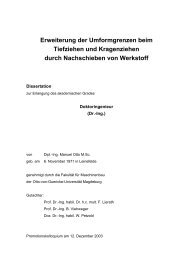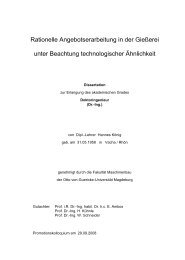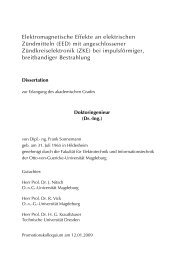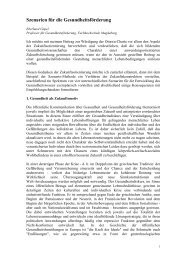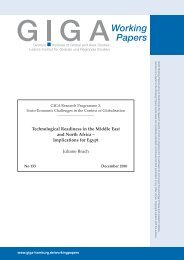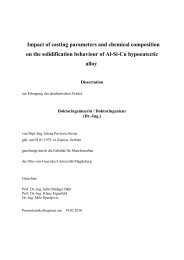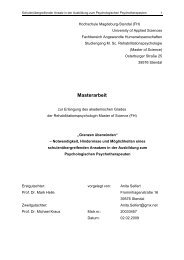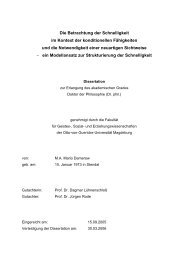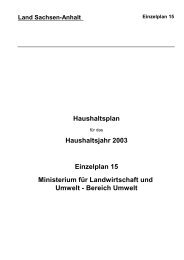Chapter 1
Chapter 1
Chapter 1
Create successful ePaper yourself
Turn your PDF publications into a flip-book with our unique Google optimized e-Paper software.
onmental issues and their relation to development have<br />
been approached in a more systematic way. Markets often<br />
Environmental institutions and policies<br />
fail to account for the environmental impact of business, Since the 1960s the Government has been implementing<br />
agricultural, and industrial activities, opening a critical role environmental policies through a variety of institutions, but<br />
for government to correct for possible failures. But many by the late 1980s the Government recognized that it needed<br />
governments have fallen short of fulfilling this important to focus its somewhat diffused institutional efforts more<br />
role, either because they were unaware or did not under- effectively. In 1988 the Agence Nationale de Protection de<br />
stand the economic costs of coastal, urban, or agricultural l'Environnement (ANPE) was created to: (1) analyze and<br />
development without some form of environmental man- monitor the state of the country's environment and (2) to<br />
agement. The Government recognizes that its growth objec- combat all sources of degradation to the natural environtives<br />
in irrigated agriculture, industry, and tourism, ment. In 1990, with the help of intemational experts, the<br />
combined with shifts in the population to the entire coastal Govemment prepared a National Environmental Action<br />
area (where already 77 percent of the population are con- Plan. Environmental management also became a central<br />
centrated in less than 25 percent of the total land area) place objective of the current Eighth Development Plan<br />
pressures on the natural resource base and pose potential (1992-96), the first plan to devote a chapter specifically to<br />
pollution and other environmental problems which can only the environment. In 1991 the govermment created the<br />
be addressed in an integrated fashion. The Government is Ministry of Environment and Regional Planning (MEAT),<br />
undertaking a strategic study of the environment and nat- giving it oversight of the ANPE and responsibility for impleural<br />
resources for the preparation of the Ninth Plan. The menting the govemment's three part strategy:<br />
main environmental problems facing the country today are: * Prevention through environmental impact assessments<br />
Land degradation, due to desertification, drought, flood- (ANPE) for any new project, publication of pollution staning,<br />
and other climatic changes, inappropriate agricultural dards, public awareness campaigns, training and environpractices,<br />
and urban encroachment. It affects over 60 per- mental education;<br />
cent of the country's usable land resources and is leading to * Inspection and monitoring of compliance with environthe<br />
permanent loss of the equivalent of 24,000 hectares of mental and pollution control regulations using research labagricultural<br />
land (about 0.5 percent of cultivated land) a oratories, monitoring stations, and technical staff; and<br />
year; * Curative actions in areas where serious damage has<br />
*1 Water scarcity that puts increasing pressure on existing already been done.<br />
water resources. The Eau 2000 study (1994) and the World The main emphasis is on prevention, and MEAT has<br />
Bank's Water Sector Review (1994) estimate that almost all launched seven programs described in the background paper<br />
of Tunisia's available water resources will be fully developed to implement the strategy. In addition, MEAT intends to<br />
by the year 2000, causing competing demands for scarce consolidate all environmentally related legal codes (there are<br />
supply and imposing constraints to long-term growth; and some 350 existing legal texts related to environmental issues)<br />
* Coastal degradation, from pollution and overdevelop- into a coherent and integrated environmental policy framement<br />
of urban, industrial, and tourist areas at or near the work. The Govemment budget allocation for environmental<br />
coastline. By the year 2010 Tunisia's population is esimated protection has increased over the past decade from less than<br />
to grow by between 3-4 million people, the majority of 0.2 percent of GDP to around 0.4 percent of GDP (0.2 perwhom<br />
will live along or near the coast, increasing pressures cent for MEAT alone) by 1993. This level rises to nearly 1<br />
on marine and coastal resources. 4 percent of GDP when municipal and water, soil, and forest<br />
Problems of water and air pollution, and solid waste dis- safeguarding activities are included. The majority of these<br />
posal are still manageable in Tunisia, and Tunisian authori- budgetary funds comes from foreign assistance (bilateral<br />
ties understand that it is far costlier to pay the dean-up bill grants, METAP, GEF, and loans).<br />
for these problems than it is to avoid them in the first place. Despite Tunisia's well-organized institutional frame-<br />
Consequently, the Government is acting now to put in place work, environmental monitoring and enforcement capacity<br />
regulations and enforcement institutions designed to avoid needs strengthening. Meteorological services should also be<br />
costlier pollution problems in the future. improved. Many countries in Latin America and Sub-<br />
24 TUNISIA S GLOBAL INIEGRAI1oN AND SuSlWNABLE DEvELopMENIP STRATEGIC CHOICES FOR TBE 21 ST CENTURY




